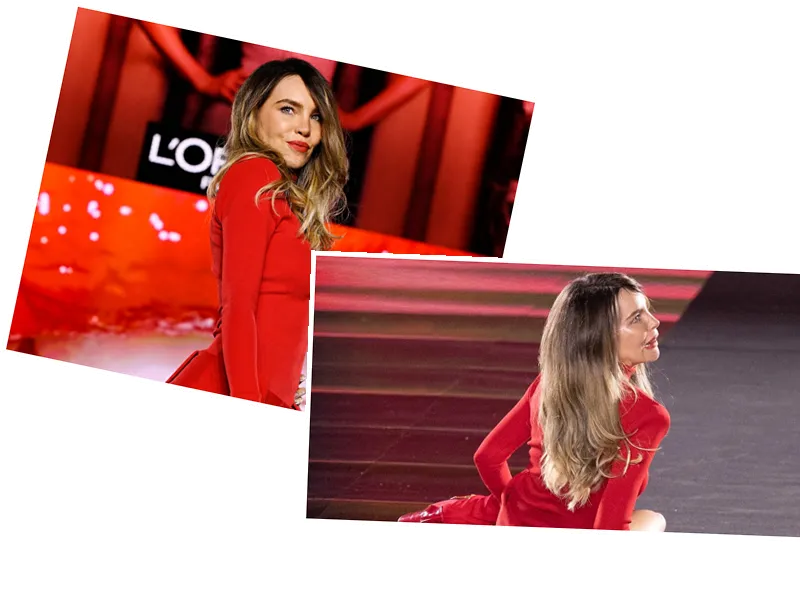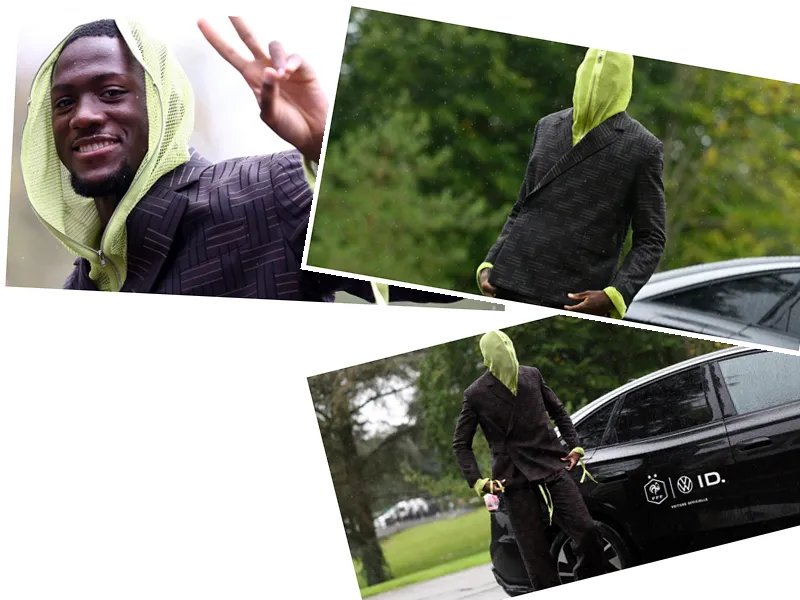Out with sweatpants, in with skirts for men. Sasha Zhoya, a 22-year-old French athlete and expert in the 110m hurdles and pole vault, opted for a skirt during fittings for the opening ceremony of the Paris Olympic Games on Friday. It was behind the scenes of the France.tv documentary series “At the heart of the Games”, which was broadcast on Monday on France 2, that the young athlete, representing France during the Games, spoke about this possible bold choice. In the film's teaser, Sasha Zhoya, smiling and wearing a navy blue skirt with satin fabric, leaves the fitting room in a singular outfit.
“We can wear everything! There are no more men or women in fashion now. For the young sportsman, fashion does not obey any gender. “Women have the right to wear pants, it could be good if men have the right to wear skirts,” he chants before putting on the skirt with the blue of the French flag. After the broadcast of this video on the social network X on July 22, many Internet users reacted to Sasha Zhoya's choice. If many negative comments appeared, enthusiastic responses also poured in: “We overvalidate”, “I love it”, “That’s good, that’s the right thought, this is a France that I love
It is an “absolutely exceptional project”, affirms categorically, Antonio Grigolini, director of documentaries at France Télévisions. The first two episodes of the doc series “Au Cœur des Jeux”, produced by the Naudet brothers and financed by France Télévisions and the National Cinema Center (CNC), will be broadcast this Monday July 22 at 9:10 p.m. on France 2.
An immersion in closer to the little invisible hands of the Olympic Games. If the usual official Olympics film will be broadcast in early 2025, with this series, the objective is to innovate. “We wanted to reinvent ourselves and follow behind the scenes, before, during, and perhaps after the Games,” explains Tony Estanguet, president of Paris 2024. So to carry out this unique approach, the Franco-American directors Jules and Gédéon Naudet have the difficult task of condensing the last months of preparation for the Olympics into four episodes of less than an hour.
A challenge for this duo accustomed to reporting on terrorist attacks. “In September 2001, we were following the New York firefighters when the first plane hit the World Trade Center,” recalls Jules Naudet, the younger brother. We made a film about it. » It will be “New York: September 11”. “Finding that human connection that brings us all together.” After the events of November 13, 2015, several survivors gave them powerful testimonies, compiled in the three episodes of “Fluctuat Nec Mergitur”. But after these “heavy documentaries”, they wanted “to change register, to be in Paris, [their] city of birth. And what's more, live, in immersion, in the moment.
The idea for the documentary series was born three and a half years ago with the desire to “tell the big story of the Games with little stories”, specifies the director. “We’re obviously going to talk about Tony Estanguet, who we filmed brushing his teeth,” he laughs. But above all we want to show those we don't see and without whom there would be no Games, to find that human connection that brings us all together.
So to unearth rare gems and find the best participants, for three months, the production teams held casting calls. And to imbue the series with their usual direct style (without voiceover), the documentarians spoke several times with the extras after filming, equipped with a simple dictaphone. The recordings were then added to the images shot beforehand, in order to reinforce the immersive aspect. In the first two episodes, broadcast on July 22, we follow the head of operations for the torch relay, the deputy representative for deliveries of the urban park installed at Place de la Concorde (8th arrondissement), the installers of the Olympic rings on the Eiffel Tower, or a lively exchange between Anne Hidalgo and Valérie Pécresse around public transport during a budget meeting.
Dozens of canned moments without compromising safety. But the most unique sequence is undoubtedly the one where Tony Estanguet and the mayor of Paris stroll through the Austerlitz basin, inaugurated last May. This inverted cathedral of 50,000 cubic meters (the equivalent of 20 Olympic swimming pools) stores waste and rainwater during heavy rainfall to allow athletes to swim in the Seine. The realization of these two components led the Naudet brothers into confidential meetings. They attended numerous meetings at the Élysée, with ministers and the prefecture. “I know the opening ceremony by heart,” jokes Jules Naudet. To find these dozens of moments to put in a box without compromising security, the directors constantly communicate with Paris 2024 and the co-producer, Gaël Leiblang.
“We identified the interesting events beforehand, but we filmed much more than we needed,” believes the older brother. The episodes broadcast this Monday evening required fifty days of filming, “with some intense days like during the arrival of the flame in Marseille, where three teams were on deck and each filmed for 12 hours. » Thirty people work in three editing rooms. “The teams hung dozens of post-its on the walls to find the best arrangement that tells the story of Tony (Estanguet's) vision and project for ten years, the preparation of a city, and the ideas for the ceremony. opening,” says the co-producer. And it doesn't stop there: the last two issues will be filmed during the Olympic and Paralympic Games, and broadcast during September.






